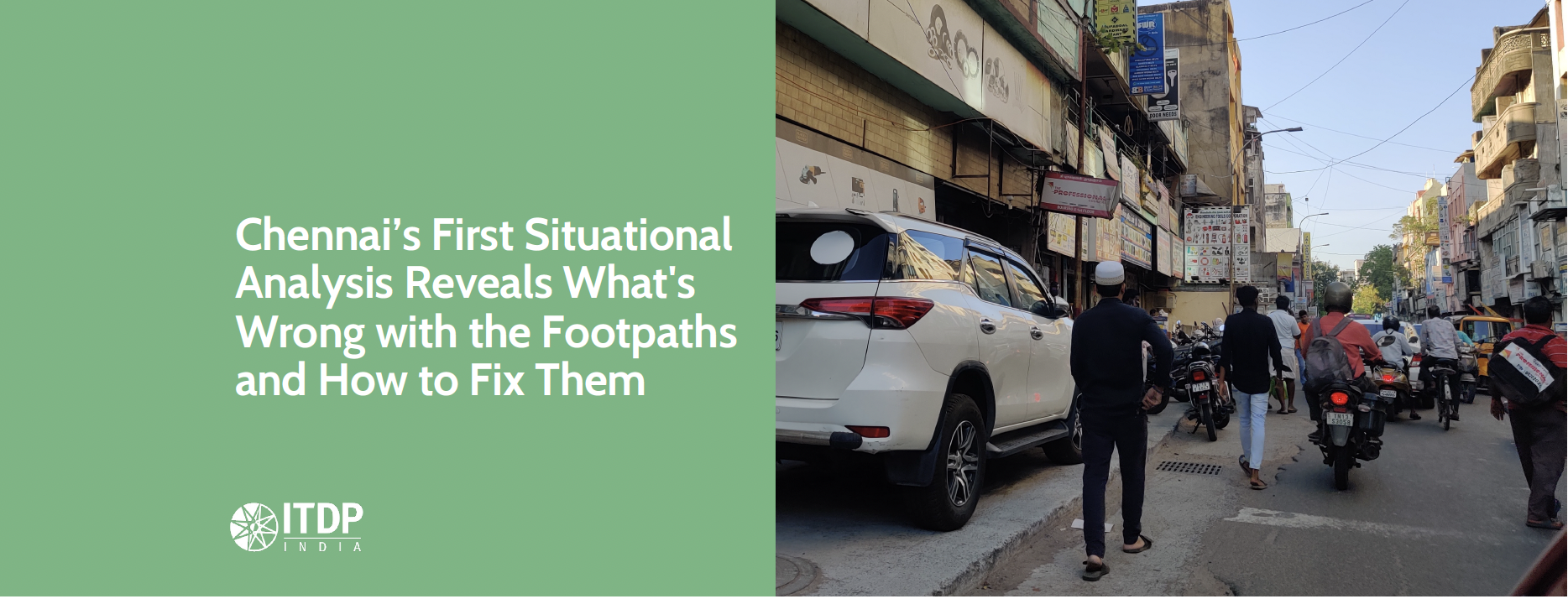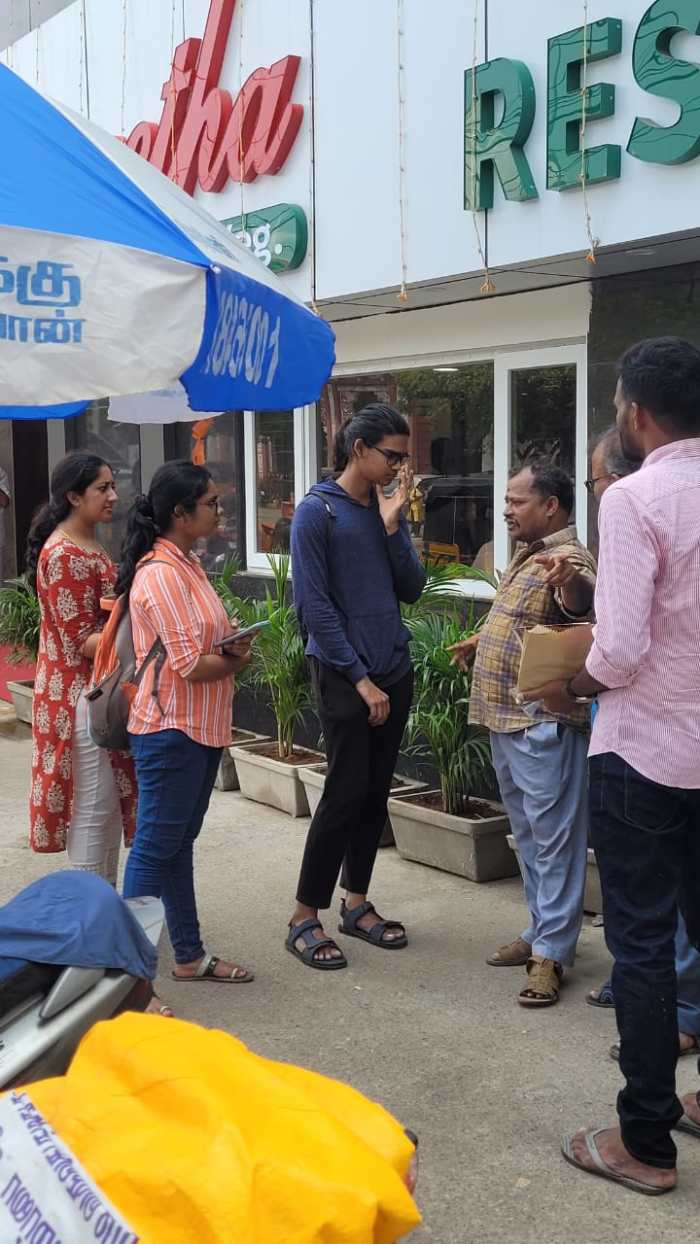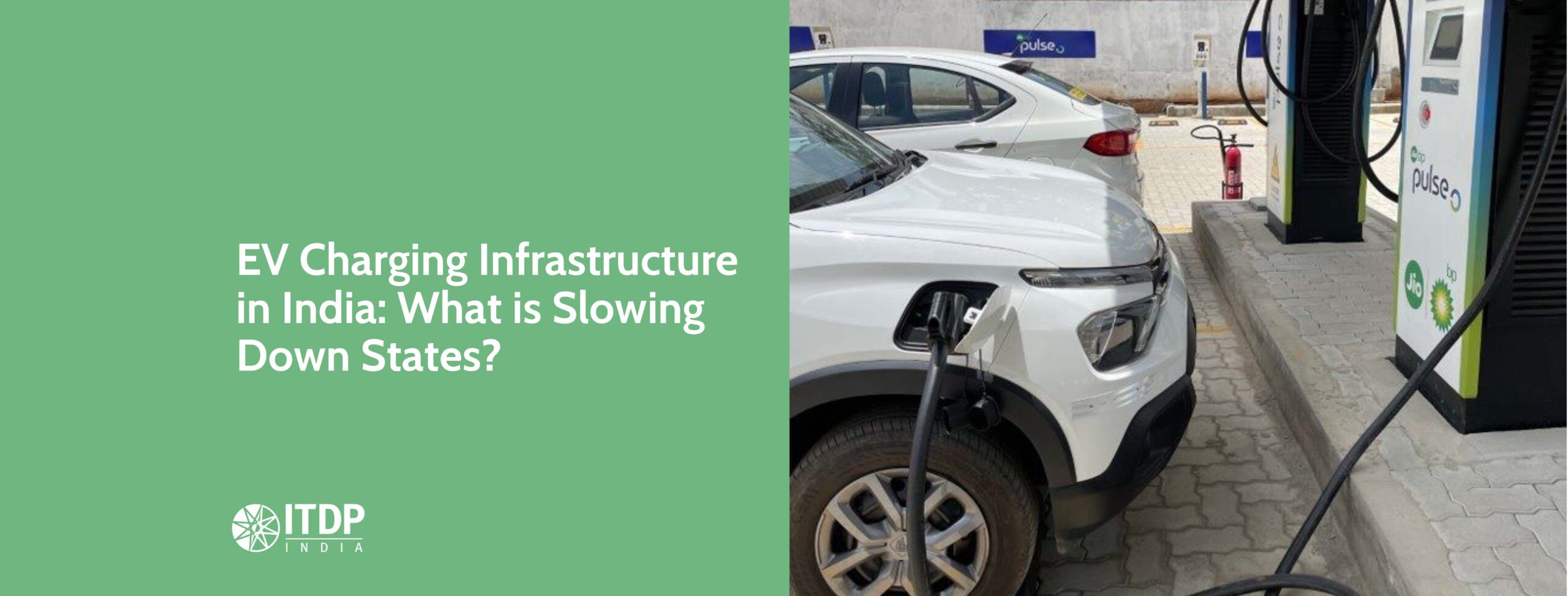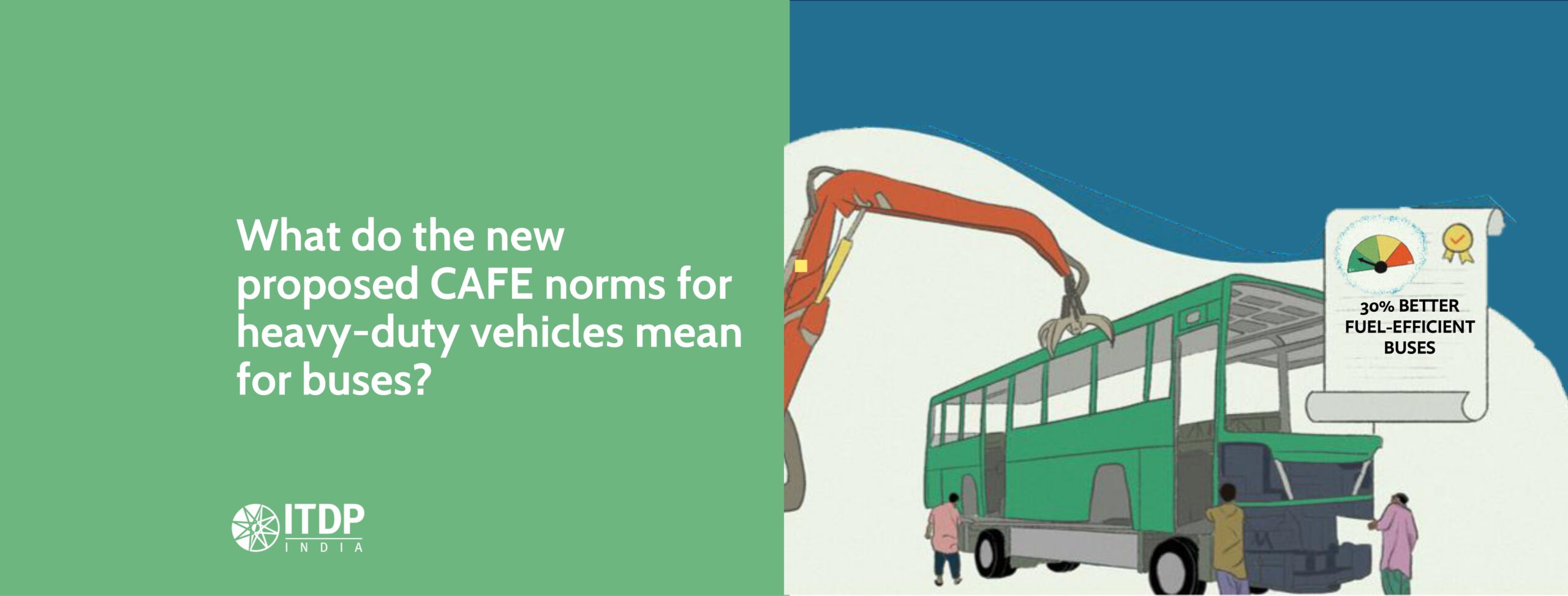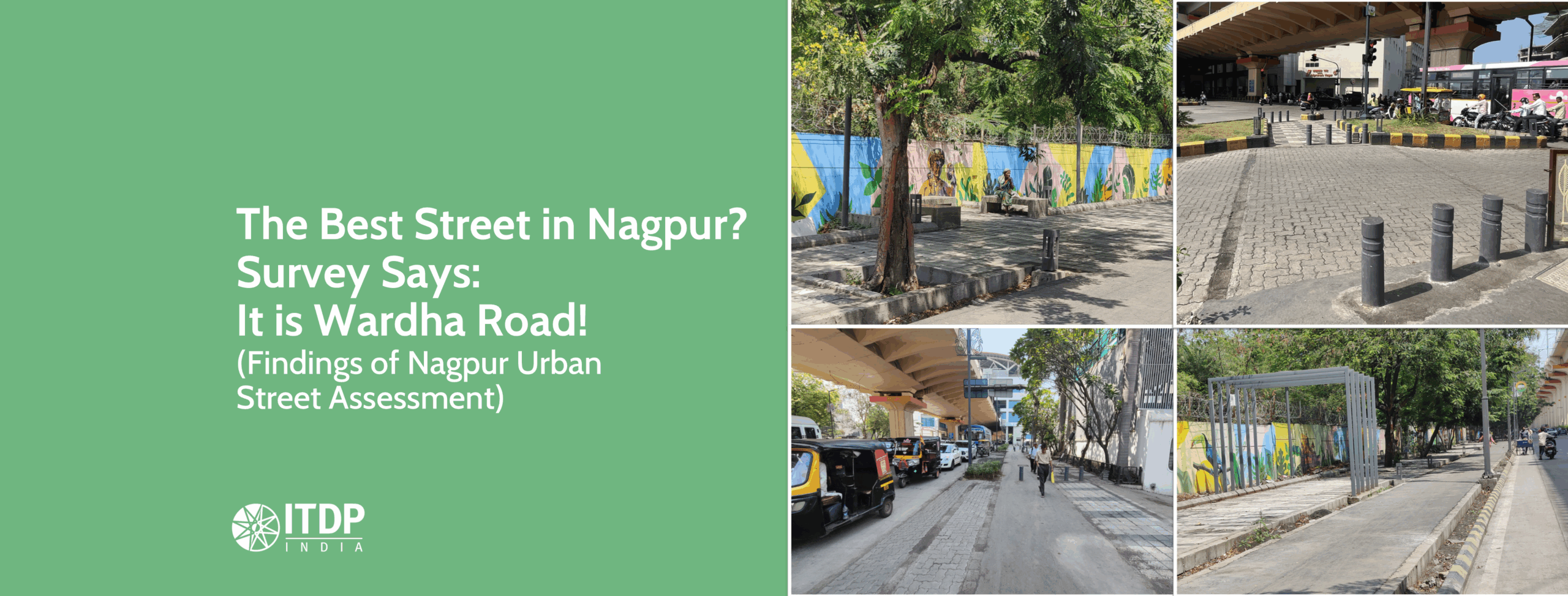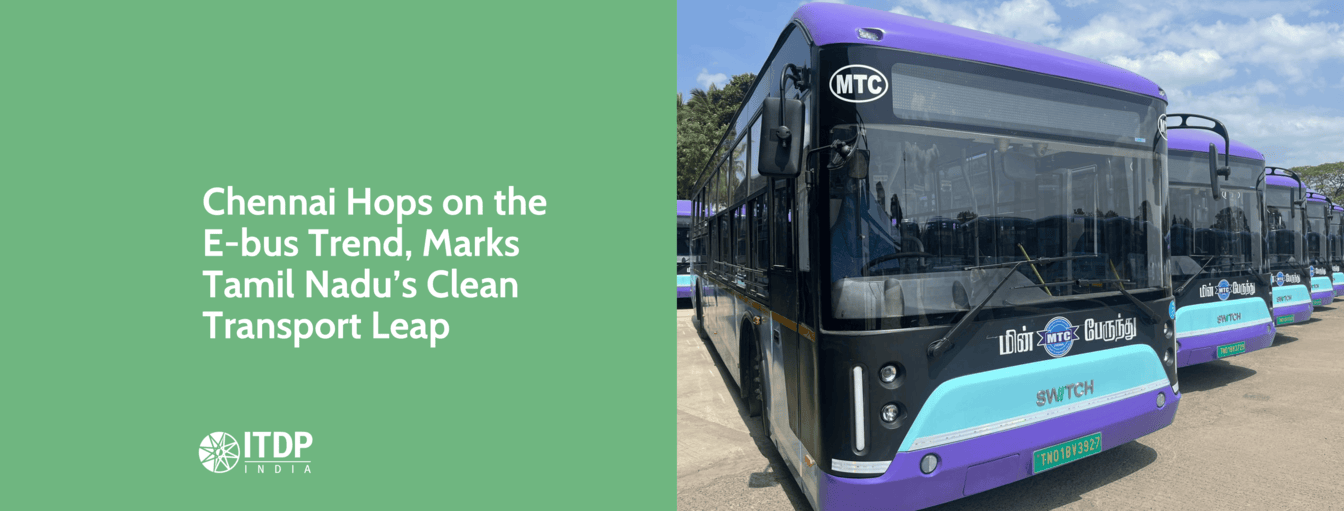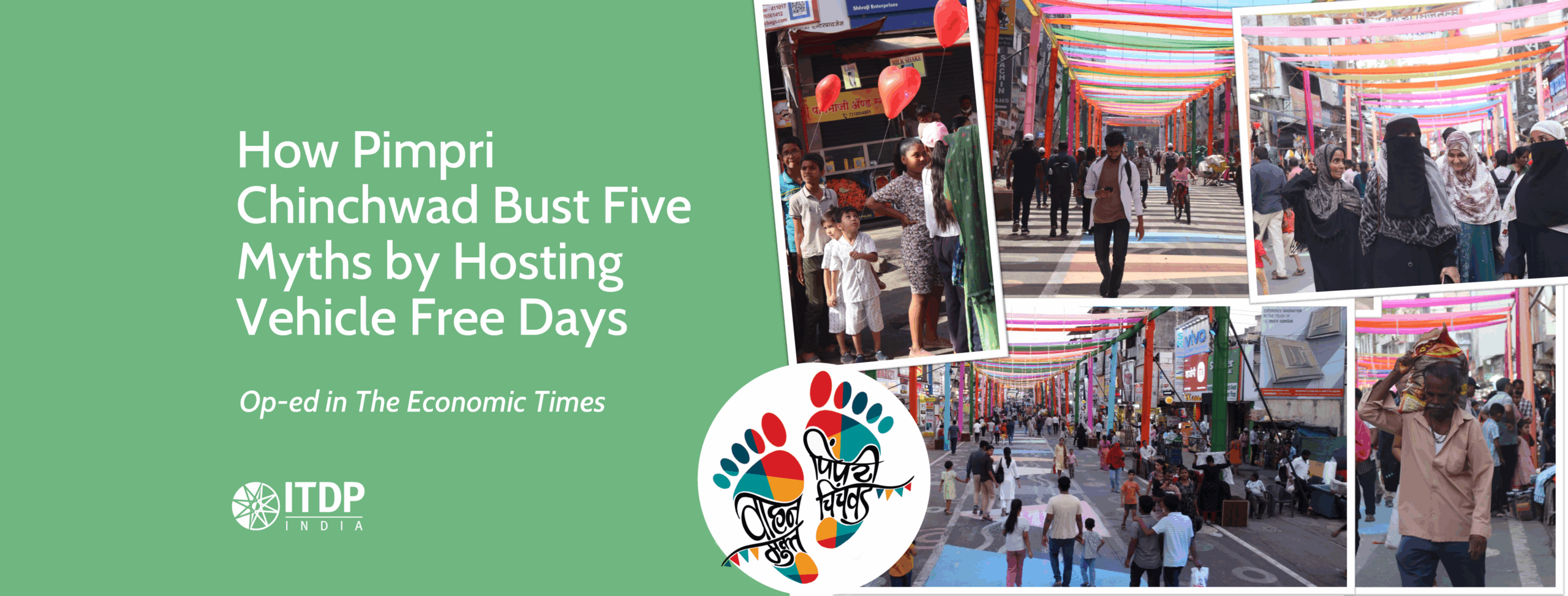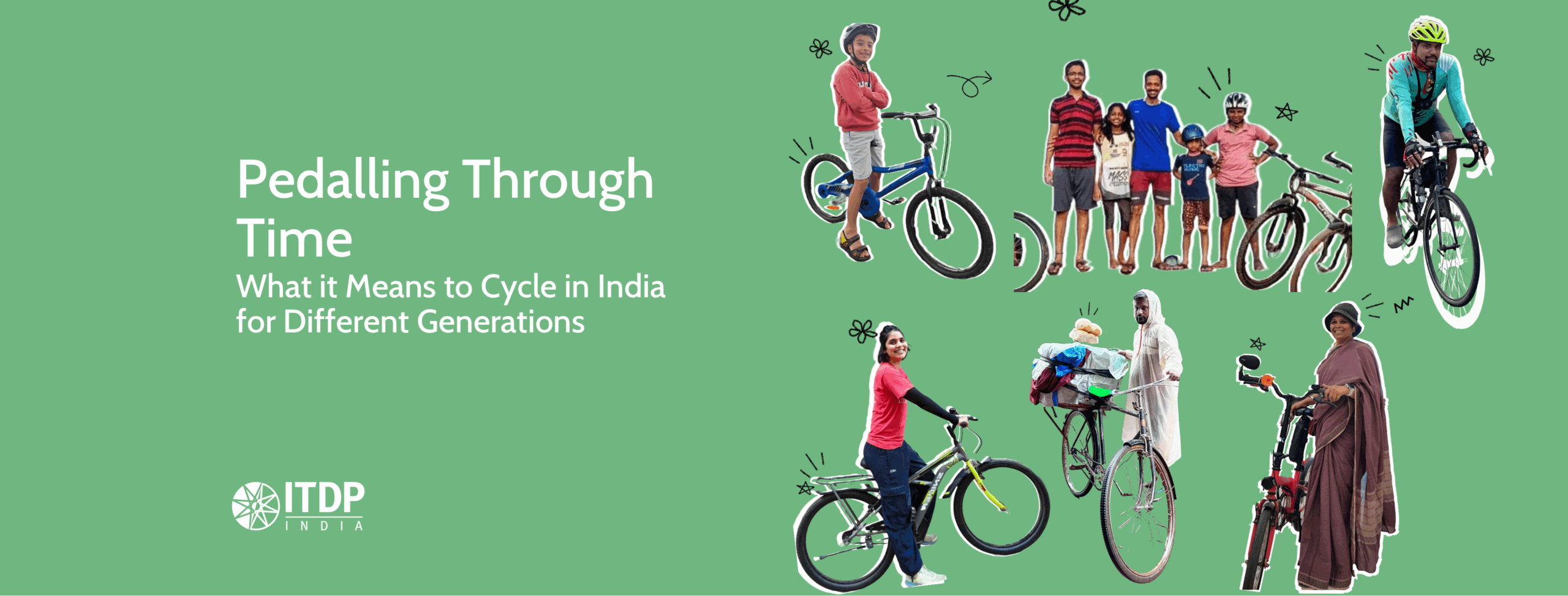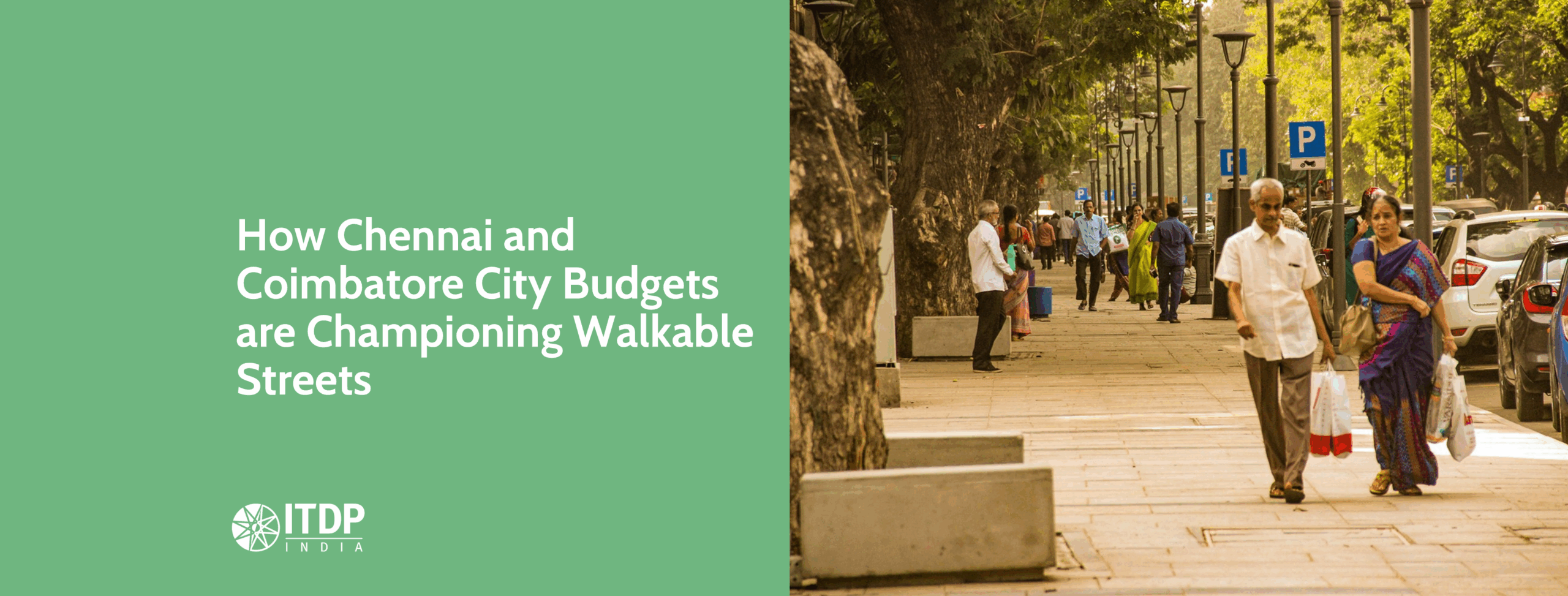Assessments are a part of everyone’s life. Ask a student, a professional, or even a patient, almost everyone is put through a series of tests, to check whether their performance is upto the mark or not. In the same way, don’t you think our cities need a thorough assessment, once every few years?
Assessments and analysis can help a lot, as if holding a report card up the face of city decision makers to assess what works and what doesn’t. It is with this thought that in 2023-2024, ITDP India’s team, embarked on an ambitious journey to assess and score the situation of the city’s streets and how walkable they are!
But why assess walkability?
Walking is the most fundamental and natural mobility for most people in the city. It is a birthright for everyone to have and own, and to move, and access different parts of the city, that often gets taken for granted.
Picture this in fact! Almost 23% of trips in Chennai are made by ‘walking’, as per the Comprehensive Mobility Plan for Chennai Metropolitan Area (CMP), 2023. However, walking on arterial and sub-arterial (internal) streets continues to pose a high risk for pedestrians.
And these risks are translating into fatalities. Between 2019 and 2023, for instance, while Chennai took extraordinary measures to reduce the total number of accidents and fatalities, pedestrian fatalities still constituted a significant number. As per data assessed and analysed by ITDP India, pedestrian deaths made up 43% of all road accident deaths in Chennai. Furthermore, of all pedestrian related accidents in Chennai in 2023, 30% ended up as fatalities. This is an increase from 11% and 22%, respectively in 2019.
The above data point is crucial to delve into given that the city adopted the Non Motorised Transport (NMT) Policy in 2014, and it followed through by developing over 170 km of footpaths on key Bus Route Roads. This begs the question; what happened to those footpaths? Are they intact? Are they being utilised as was once imagined? Do they need improvements? These are some of the questions that ITDP India’s latest study, called Situational Analysis of Chennai’s Footpaths, attempts to answer.
What is a Situational Analysis?
A situational assessment aims to understand the current condition of infrastructure in detail, highlighting the merits and demerits of footpaths in comparison to standards. It also builds a good database of the infrastructure and develops a scoring system to prioritise streets where footpaths require immediate attention. The study in Chennai identified 14 streets across different zones of Chennai, in which 32 km of footpaths were mapped and observed, and over 1700 user perception surveys were conducted. More importantly, this study also provides a framework to analyse the impact of this humble piece of infrastructure on its users, for the future as well.

How was Situational Analysis done? What parameters were used?
Every pedestrian infrastructure was viewed from three dimensions:

Design Mapping
How efficient is the design and how well it has adhered to the standards. This was done by using the MerginMaps which uses 14 performance indicators

User Perception Survey
Gathering insights from vulnerable groups (young, elderly pedestrians, cyclists, public transport users) on footpath experience, using 8 indicators.

Observation Surveys
Analyzing traffic volume and user behavior based on 9 indicators of optimal street usage.
The data collected was then analysed through the lens of 4 key parameters of Healthy Streets:
- Ease of Mobility – The ease with which pedestrians can walk on wide, seamless, continuous footpaths free of obstructions.
- Safety—The availability of dedicated pedestrian crossing infrastructure, traffic calming elements, a buffer between carriageway and footpath, street lighting, and active property edges ensures pedestrians’ personal and physical safety.
- Universal Accessibility – Inclusion of the vulnerable sections of society, such as the elderly, children, pregnant women, and persons with other physical challenges, through design.
- Livability – A sense of comfort and belonging created by the presence and integration of street play, street commerce, and other socio-economic activities, in addition to providing functional footpaths.
What were the key findings of the Situational Analysis?
The study provides insights into the importance of footpaths as well as having good footpaths to improve their usability.
| Footpath Design | User Perception | Observation Survey | |
| Ease of Mobility & Universal Accessibility | 55% of footpaths across all streets were found to be of inadequate width. | 58% of those who reported that the footpaths are not walkable are women | Only 40% of the pedestrians are seen walking on footpaths. Most prefer walking on the carriageway due to obstructions and inadequate design. |
| 40% of the total length of all streets lacked a footpath. | 76% of respondents found the streets had several obstructions on the footpath. | On average, only 13.21% of modes of commute during peak hours on streets is walking. | |
| On average 10 obstructions per 100m and parking constitutes 40% of all the types of obstructions, followed by encroachments like commercial spillover, advertisements, construction debris etc. | |||
| Safety & Livability | Street lights illuminate only 61% of the streets. The total number of pedestrian crossing points provided is 50% below the required number per IRC standards. | 57% of respondents who reported having difficulty crossing the street, and who found it unsafe at night are women 73% of respondents find streets unsafe to cross, and 71% of them are concerned about speeding vehicles while crossing. | Speeds in neighbourhood-level streets are able to go as high as 60kmph. Speed breakers followed by pedestrian crossing points are most effective traffic calming measures observed. 48% of all pedestrians are women, showing the need for inclusive design. |
How did individual streets perform?
To further make the analysis granular, a scoring framework was used which helped rate the performance of the footpath infrastructure across all 14 streets on all 31 indicators of performance. It also helped identify the nature of intervention required, based on varying performance:
- A street with a rating of 25 or more can be improved through strict enforcement and minor repairs and interventions.
- Streets rated 19 to 25 would require enforcement to remove obstructions, improve footpath surfaces, and introduce accessible crossing infrastructure.
- Streets with a rating of 14 to 19 would require repairs to improve the continuity of footpaths, remove obstructions, and introduce safe midblock crossing infrastructure.
- Streets with ratings below 14 should be redesigned and restructured completely.
Here the winning street was Pedestrian Plaza, scoring a brilliant 25.71, whereas the poorest performing street was CP Ramaswamy Road scoring just 12.72 on 30.

The following inferences can be drawn from the studies, as well as the score card.
- Streets prioritising pedestrians are safer, more accessible, and liveable: Pedestrian Plaza, CSIR, and Wallajah Road have exceeded basic footpath requirements, catering comprehensively to pedestrian needs.
- Continuous and consistent footpath standards across the entire street length are crucial for ensuring ease of pedestrian mobility. Streets such as Sardar Patel Road and Peter’s Road demonstrate that design and perception scores do not align with each other.
- Pedestrian crossings and traffic calming measures should be prioritised alongside footpath provision: Despite adequate pedestrian infrastructure, streets like Perambur High Road, Peter’s Road, and Sardar Patel Road show moderate performance.
- In streets without formal footpaths, stormwater drains double as walking zones but lack pedestrian safety and comfort. This necessitates efficient drainage design for clear walking zones, as is evident in streets such as C.P. Ramaswamy Salai, Anna Main Road, Eldams Road, and Broadway.
- The absence of an enforcement/O&M framework results in footpath encroachment, diminishing clear walking zones for pedestrians. Streets that perform fairly, such as Old Jail Road, Thirumalai Pillai, Gandhi Irwin, and Thiru Vi Ka High Road, illustrate this issue as they were all once refurbished under the 170km of BRR road transformation project, benefits of which did not continue due to poor maintenance.
Recommendations for Chennai to improve its network of streets
Good footpaths are a win-win for all citizens. On one hand it can reduce travel costs for low-income households, on the other hand, it boosts physical health and improves inclusivity by encouraging more women, elderly, children, and vulnerable people to use public spaces. An overarching benefit for all sections is also that it lowers emissions by promoting walking and cycling and can address congestion. The results of the study helped identify key priorities to improve footpaths:
Way Forward
An assessment is good as long as the feedback is implemented on. At ITDP India we are happy to share that the results and recommendations of the study were showcased to the city engineers. This was presented during a workshop organized by ITDP India, focusing on the significance of Healthy Street Design guidelines to enhance footpath design and usability in the city.

Since then, the Greater Chennai Corporation has committed to several initiatives aimed at strengthening pedestrian infrastructure. These initiatives include identifying new networks for footpath repairs and reconstruction, conducting audits to assess the condition of existing street infrastructure, and creating a Standard Operating Procedure (SOP) for the operations and maintenance of the city’s footpaths. To boost these initiatives further, the state allocated a Rs 200 crore budget to build and improve over 200 km of footpaths in Chennai in 2025, which is the first dedicated budget for pedestrian infrastructure. This work is being carried out with technical assistance from ITDP India.
It is also pertinent to note that this exercise has been replicated in multiple cities by ITDP India, showcasing a powerful methodology that can be embraced by many more.
This isn’t just about rating pavements; it’s about reimagining streets as spaces of safety, accessibility, and shared humanity. The path ahead is clear: Chennai’s footpaths need more than repairs, the city does need to prioritise the scale-up of footpaths across the city. They demand a collective awakening—to see sidewalks not as afterthoughts, but as lifelines. The data is here. The solutions exist. Now, will we walk the talk?
By Sanchana S, Senior Associate, ITDP India
Edited by Donita Jose, Senior Associate, ITDP India




